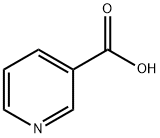A7115912
Retinyl acetate , Cell culture level , 127-47-9
Synonym(s):
Retinol acetate;Retinyl acetate;Retinyl acetate solution;Vitamin A acetate;Vitamin A acetate solution
CAS NO.:127-47-9
Empirical Formula: C22H32O2
Molecular Weight: 328.49
MDL number: MFCD00019413
EINECS: 204-844-2
| Pack Size | Price | Stock | Quantity |
| 1G | RMB63.20 | In Stock |
|
| 5G | RMB84.00 | In Stock |
|
| 25g | RMB228.80 | In Stock |
|
| 100g | RMB698.40 | In Stock |
|
| others | Enquire |
Update time: 2022-07-08
PRODUCT Properties
| Melting point: | 57-58 °C |
| Boiling point: | 406.22°C (rough estimate) |
| Density | 1.0474 (rough estimate) |
| refractive index | 1.547-1.555 |
| Flash point: | 14℃ |
| storage temp. | 2-8°C |
| solubility | absolute ethanol: 25 mg/mL |
| form | solid or viscous liquid |
| color | Yellow powder |
| Odor | Amine like |
| biological source | synthetic (organic) |
| Water Solubility | soluble |
| Sensitive | Light & Air Sensitive & Hygroscopic |
| Merck | 14,10013 |
| BRN | 1915439 |
| Specific Activity | 475,000-650,000USP units/g |
| Stability: | Hygroscopic, Light Sensitive |
| InChIKey | QGNJRVVDBSJHIZ-QHLGVNSISA-N |
| LogP | 9.4 at 25℃ |
| CAS DataBase Reference | 127-47-9(CAS DataBase Reference) |
| NIST Chemistry Reference | Retinol, acetate(127-47-9) |
| EPA Substance Registry System | Retinol acetate (127-47-9) |
Description and Uses
Retinyl acetate (retinol acetate, vitamin A acetate,127-47-9) is a natural form of vitamin A. It is the acetate ester of retinol. It consists of yellow crystals which are greasy or sticky. It has a mild, characteristic odor. It has potential antineoplastic and chemo-preventive activities. It can be used to fortify food with vitamin A. As vitamin A acetate can induce cell differentiation and inhibit cell proliferation, it is used in skin-conditioning agent.
vitamin precursor
Safety
| Symbol(GHS) |  GHS08 |
| Signal word | Danger |
| Hazard statements | H360-H413 |
| Precautionary statements | P201-P280-P308+P313 |
| Hazard Codes | Xn,Xi,T,F |
| Risk Statements | 38-63-36/37/38-53-61-11 |
| Safety Statements | 36/37-45-37/39-26-53-16 |
| RIDADR | UN1170 - class 3 - PG 2 - Ethanol |
| WGK Germany | 2 |
| RTECS | VH6825000 |
| F | 1-8-10 |
| TSCA | Yes |
| HS Code | 29362100 |
| Toxicity | LD50 (10 day) orally in mice: 4100 mg/kg (Kamm) |





